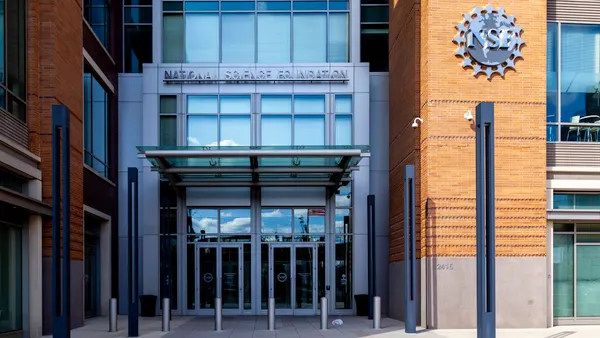Dive Brief:
- In a Monday afternoon presentation at ASU+GSV, Paul Quinn College President Michael J. Sorrell asked “What if we’re wrong?” in regard to the approach to addressing higher education’s problems.
- Higher education, Sorrell said, is in a crisis as a result of more than $1 trillion in student loan debt; as well as student perceptions of campus safety and the prospects for their futures.
- Higher ed no longer works for the students it must serve, and solving its design flaw, he said, will require flexibility, an inspirational “we over me” mindset, strong leadership, experiential learning opportunities and entrepreneurial thought.
Dive Insight:
When the model you have doesn’t work anymore, you have a design flaw. And sometimes fixing that can require blowing up the existing model and starting over. But higher ed disruption, Sorrell pointed out, has become a cottage industry, and there's little agreement on the best way forward or the root cause for the problems that persist today.
At Paul Quinn College, which is located south of downtown Dallas, TX, incoming students have an average 17 ACT and 2.7 GPA. Economically, 80-85% are Pell granteligible, and 70% have $0 expected family contribution. The school has a small endowment but is strong financially, while the surrounding community is over 90% minority and 49% of residents make under $30,000 a year. The institution, however, has incorporated social issues and the need to prepare students academically and professionally into a “New Urban College Model."
Under that model, the school is the first federally-recognized urban work college, with residential students participating in a program where they work 10-20 hours a week in on- or off-campus positions and receive an annual stipend totaling $1,000-2,000 each academic year. The institution also uses open-sourced textbooks to help students financially. Students were using financial aid for textbooks to help their families instead, and you have to work with those needs, Sorrell said.
The school has also notably done away with its football team because they were really expensive and "never won any games." Its former football field is now an organic farm that serves as an experiential learning opportunity and feeds the community around the school, which was in a food desert. This also serves to provide an inspirational “we over me” example, placing the needs of the community over the wants of the individual.
Prior to the implementation of the work program, PQC used to cost $23,875. It now costs $14,495 (or $9,920 for off-campus students). Four-year loan debt averages are now around $9,500. Incorporating the work program, which allowed the school to make that $10,000 tuition cut, was part of incorporating the concerns of students and families into governance. “It is irresponsible to tell students from poverty that the way out of poverty is massive amounts of student loan debt," Sorrell said. "That is not right. We refuse to buy into that culture."
Ultimately, Sorrell says institutions must provide flexibility for modern students, like leaving college offices open after hours for those who work or providing hybrid classes that allow them to mix online and face-to-face interactions around their schedules. It must become inspirational for those who aren’t being engaged about what matters to them or seeing themselves in the curriculum. It must provide opportunities for students to learn around what they’re familiar with and do know, and start teaching them from a position of strength. Its leadership, he said, must also be rewarded for going beyond what's considered "safe" and not vilified or jettisoned when a process doesn't run smoothly at first. And it must consider allowing students and families to be engaged in its shared governance. " Don’t be afraid to show your students that they actually matter," Sorrell said.
This is the model that has, as Sorrell is more than happy to point out, led Paul Quinn College to be called an emerging national leader by The New York Times and a college that works the way America should work by former president Bill Clinton.













